We veered the car off the main road to find ourselves bumping slowly along a dusty, track leading to seemingly nowhere.
Either side of us were an abundance of fig trees, their branches hung low, heavy with what looked like plump, black minature Santa’s sacks! Olive trees were scattered amongst them intermittently, truly the fruits of the Gods!
As we lurched forward and our trail narrowed we reached a small clearing, it was obvious we needed to continue on foot. Just a few steps to our right, over broken rocks and tall grasses our expectations were not high.
Ahead were what looked like the remnants of a few tumbled ruins, nothing at all spectacular, especially in this part of the world but as we reached them and glanced up to our left what we saw rendered us all speechless!
Before us was a spectacle that no-one could have prepared us for. Yes, Turkey is the museum of the world, the unexplored museum of the world!
Magnesia
Magnesia is a mere 20 minute drive from Selcuk, like most ruins in Turkey it is well signposted, brown signs, denoting places of historical significance. Our wonderful hosts at The Sirince Terrace Houses had told us to drive by the ruins of the ancient Greek city Magnesia and follow the track by the fig and olive groves.
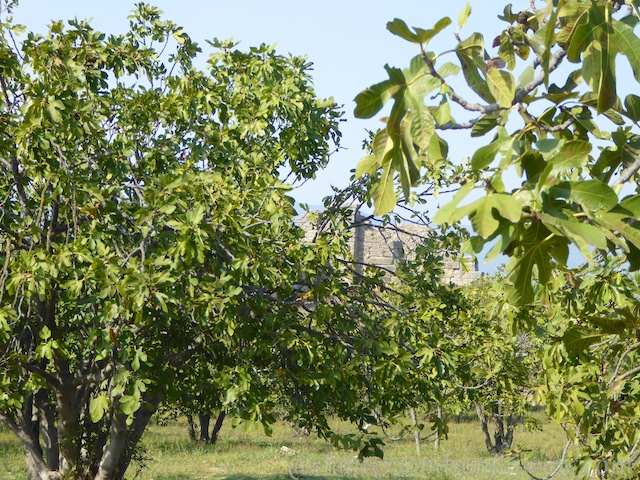
When we had driven as far as possible and stumbled down the small track to our right we looked to our right wondering if if what we could see in the far distance really was what we were seeing…..
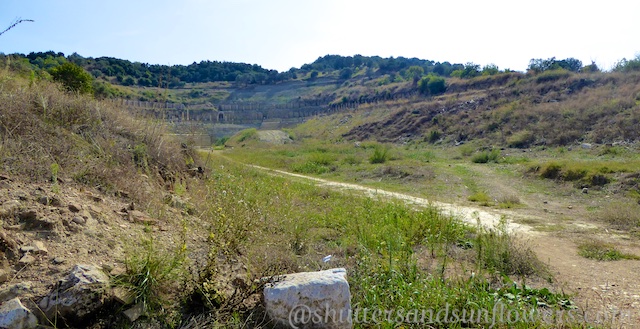
A magnificent chariot stadium almost in tact, just partially covered where the earth had clearly slipped down the hillside. No sign posts, no formal entry or admission, no significant evidence of any excavation, just there, as it had been for thousands of years, silent, ancient and deserted, the best preserved ancient stadium in all of Anatolian Turkey, just incredible!


Looking back down the stadium I really could hear the thundering of the horses hooves and chariot wheels as the blood thirsty crowd cheered and yelled for victory!
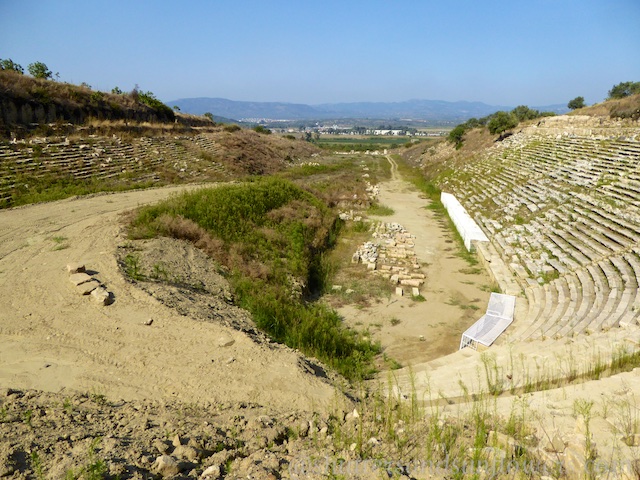
Reluctantly we walked back along the sandy path, stopping countless times to glance back at this abandoned but magnificent site, blessing Omer and Charlotte for their invaluable travel insights!
Priene
Priene is a Greek Hellenistic city dating back to the 8th century B.C. The ruins seen today date back to B.C. 350, a steep climb from the car park but worth the puffing! When you are there you are alone, steeped in ancient history, left to contemplate the past

among the grave yard of the fallen columns,

the holes where they were originally joined together clearly visible.
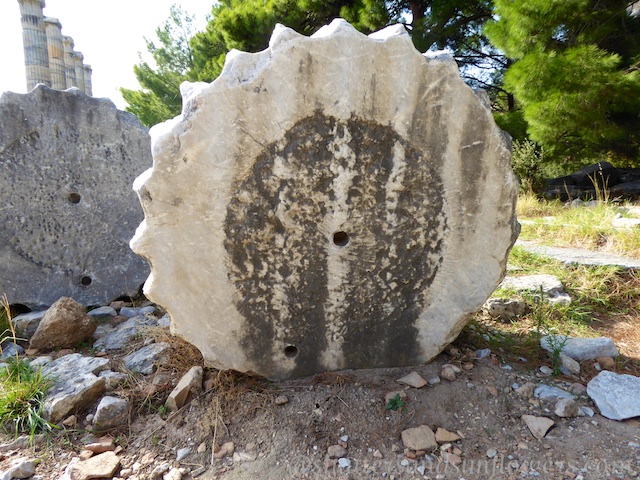
The Temple of Athena

The construction of the Temple of Athena (the daughter of Zeus and greek goddess of wisdom and reason) was dedicated by Alexander the Great in B.C. 334 and was the genius of the architect Pytheos, it was finally completed in the 1st century A.D. It was first discovered and exposed by R.P Pullan from Britain in 1868 but what we see today was the work of slight late German excavation.
As the late afternoon sunshine glinted between the columns the atmosphere was spell binding.
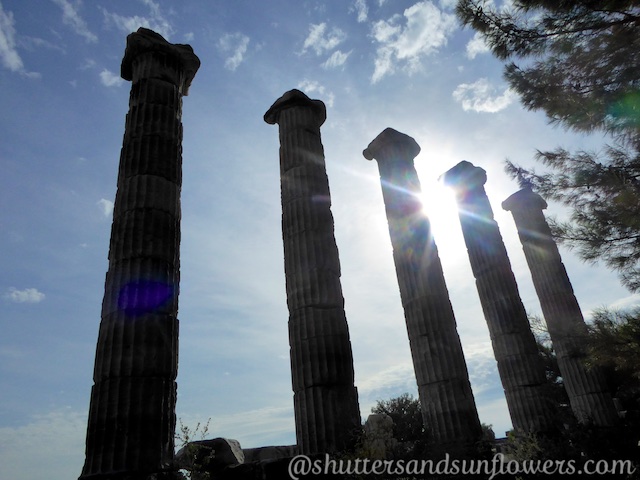
The Theatre at Priene

The Theatre at Priene is one of the best preserved examples from the Hellenistic period. The stage building was a separate structure and the orchestra performed off it. There were honor seats in the front dedicated to Dionysos the God of wine and the harvest, to whom most performances were dedicated. An alter to the God of the theatre was set up in the middle row. When full it could hold up to 6500 people.
The Sanctuary of Egyptian Gods
Inscriptions on this site reveal that Egyptian Gods were worshipped here from B.C.200. Archeological findings have proved that during the 3rd century this area was previously residential. By Byzantine times, centuries later, it had become a graveyard.

The Roman Baths at Priene
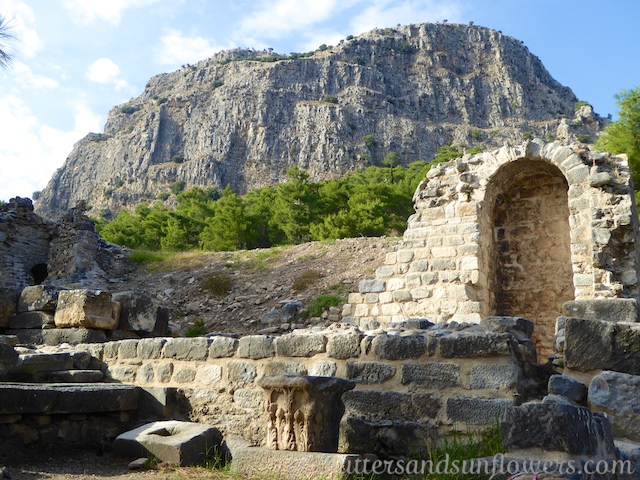
Priene never grew to be a substantial size, probably because of its hill top location. It gradually declined due to its increasing distance from the sea as the land around it gradually silted up and became reclaimed. Following the Turkish invasion in the 13th century it was eventually abandoned until excavations began in the late 19th century.
Priene should not be forgotten if you are exploring this area nor should Omer and Charlotte’s final tip of the day, a stunning drive through the hills,

to a superb early dinner of freshly caught fish, where we watched the sun set with the sand between our toes, on a tiny beach just 25 minutes further away.

We would never have found any of the day’s treasures without Omer and Charlotte. Everything we had seen and visited felt like a story waiting to be told……..
When we left the Ephesus area we drove south through beautiful undulating countryside, we were really impressed by the roads mostly very new with no traffic!

We eventually ended up in the charming fishing of Kalkan

We stayed in really gorgeous boutique hotel, The Villa Mahal, just 16 rooms scattered on the hillside with ocean front vistas,

where dangled our toes by the rocks along the Mediterranean during the day

we enjoyed candlelight suppers with scrumptious food by the water each night.

Villa Mahal’s tag line is ‘181 steps to heaven’, and heaven it was!!
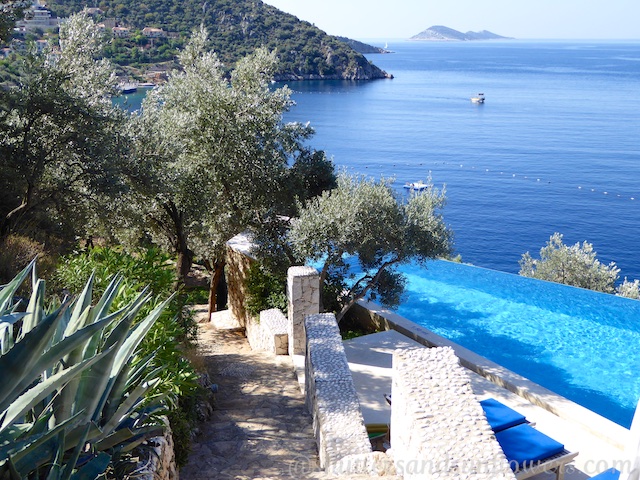


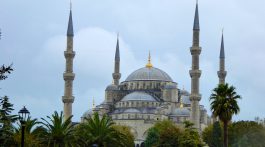
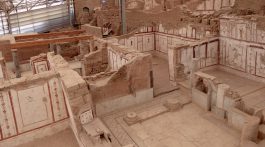


No Comment